









2023 presented a year of stark contrasts. A crippling drought, the culmination of four seasons of failed rainfall, cast a long shadow over almost every pastoralist household in Kenya, jeopardizing the over one billion US dollar economic pillar. Yet, amidst this adversity, a crucial truth became even more evident. Pastoral communities are the unsung heroes of Kenya’s conservation success. They have not only set aside their land for wildlife, but their home which comprises vast and distinctive landscapes - actually host a staggering number of Kenya’s unique and endangered species. Therefore, prioritizing rangeland management, habitat, and landscape restoration in these areas by World Wide Fund for Nature - Kenya (WWF-Kenya), is not just an environmental responsibility but also a social and an economic one. Consider this: Kenya’s tourism industry, heavily reliant on healthy wildlife populations, contributes over 10% to our Gross Domestic Product (GDP), 18% of foreign exchange earnings, and over 11% in government revenue. Investing in the well-being of pastoral communities and their ancestral lands, ensures the continued prosperity of wildlife, landscapes, and our nation.
The drought’s devastation highlighted the urgent need to build resilience for both communities and wildlife. While emergency short-term and mid-term interventions provided temporary relief to thousands of families and the catastrophic wildlife deaths, long-term solutions are critical to prevent future crises and population crashes of endangered species.
This is why securing enhanced climate financing for resilience and adaptation in developing countries is a global imperative. This is not a future need. It is urgent. It is a Climate Action priority. Lives, livelihoods and the only place we all call home - nature, are at stake. As conservation stakeholders, we must call for increased investment for these interconnected ecosystems to thrive.
Looking ahead, scientists warn of droughts similar to the one that ravaged Kenya and East Africa, with a 100-fold increase in likelihood. The March 2023 Intergovernmental Panel on Climate Change (IPCC) report echoes this stark message: extreme weather, including devastating droughts, floods, and heatwaves, will continue to hit with increasing ferocity. Therefore, I urge all Kenyans and the private sector to rise to this challenge. We must work together to finance the scaling up of innovative climate action solutions, resilience, mitigation, and adaptation interventions.
The devastating drought highlighted our vulnerabilities, but also ignited a spirit of unwavering collaboration. A reminder of the delicate balance between humanity and nature. The interconnectedness of our world and how the well-being of people, wildlife, and ecosystems is intricately linked.
Our achievements during this difficult period are a testament to the power of a unified “whole society approach.” By bringing together people, the private sector, institutions, and governments, we can tackle the greatest environmental challenges of our time. Let us continue working hand-in-hand to stop the degradation of our planet and ensure a thriving future for all – people, nature, and the economy.

Isaac Awuondo Chairman, Board of Directors WWF-Kenya
1 https://www.tourism.go.ke/wp-content/uploads/2021/07/WILDLIFE-POLICY-2020.pdf


This Annual Report covers WWF-Kenya’s key achievements for the Financial Year (FY) ending June 30, 2023 (July 01, 2022 – June 30, 2023).
A year when pastoralists in northern and southern Kenya returned home with nothing but herding sticks in their hands - drained, emaciated, and depressed because they had lost all their livestock. By the close of FY 2023, the prolonged dry spell and four seasons of failed rainfall had consumed 80% of the pastoral economy in one of the worst droughts in Kenyan history, underscoring the impact of climate change on vulnerable communities.These communities host over 60% of wildlife on their private lands, serving as wildlife corridors and dispersal areas. How can we expect them to safeguard this natural treasure and be custodians of our unique wildlife when their very survival is threatened? The situation demanded immediate action; we had to act fast and decisively.
In response to this urgent crisis, we embarked on a mission of action and compassion. In FY23, we launched the “Save a Generation” emergency drought appeal, a rallying cry to protect people, livestock, and wildlife in our priority landscapes from the relentless grip of drought made worse by climate change. The response was overwhelming. Kenyans and friends of Kenya around the world who support our conservation efforts came together. We were able to raise over 70 million shillings. These funds were critical in providing much-needed immediate support to the affected: food hampers and water for people, wildlife, and livestock, as well as hay, including hay drops for the critically endangered black rhinos. While the emergency intervention addressed immediate needs, We simultaneously directed investments towards climate resilience and adaptation interventions cushion communities and wildlife from the devastating impacts of unpredictable, recurrent, and prolonged dry spells.
Despite the loss of wildlife to the famine, in our key priority landscapes, populations of black rhinos and African elephants defied the odds. We recorded an increase in their numbers, thanks to water tracking and provision in conservancies, as well as hay drops and Lucerne for the endangered black rhinos.
In forestry, WWF-Kenya put a total of 735.35 hectares under restoration across all landscapes. With people at the center of our work, our beneficiaries generated income totalling 390.7 million Kenyan Shillings, a testament that people benefit from conservation.
In Coastal Kenya, we collaborated with the Kenya Wildlife Service (KWS) to develop the Kenya Sea Turtle Conservation Protocol. The protocol helps to streamline best practices and lays the ground for the standardization of sea turtle nesting data collection in Kenya.
In the same period, another crisis reared its head. Human-lion conflict. 10 lions were killed in retaliation in a span of one week in May. With only about 2,500 lions left in the wild, we will enhance and scale up prevention and response mechanisms in the coming financial year.
As at the end of Financial Year 2023, WWF-Kenya and our partners’ interventions have generated over 3,000 decent green jobs, while over 1,000 households have adopted renewable energy solutions. The Circular Economy initiative has also established a plastics value chain in Kenya’s second-largest city, Mombasa.
Together, we have demonstrated the transformative power of collective action, and we remain steadfast in our commitment to safeguarding our planet for generations to come.
Thank you.

Mohamed Awer Cheif Executive Officer WWF-Kenya
We are the World Wide Fund for Nature- Kenya (WWF-Kenya), a locally registered non-governmental conservation organization and an affiliate of WWF International. Our strength lies in our collaboration with the government, civil society, private sector organizations, and local communities. Together, we strive to create a healthy natural environment supporting the Kenyan people and sustainable development. Our impact is anchored on five priority programmes: Biodiversity, Research and Innovation, Coastal Kenya, Kenya Rift Lakes, Southern Kenya, and the new Northern Kenya Programme.






WWF-Kenya implements programmes in four priority landscapes, namely; Kenya Rift Lakes, Southern Kenya and the emerging Northern Kenya Landscapes and Coastal Kenya Landscape and Seascape. Our Biodiversity, Research, and Innovation (BRI) Programme work is crosscutting. The programme provides support to the landscapes programmes, species outside priority landscapes and coordinates national, regional and global policy. The map above pictorially shows where we do our conservation work.
Kenya Rift Lakes Landscape (KRL) covers three sublandscapes, namely; (i) Naivasha-Western Aberdares (ii) Eastern Mau-Nakuru (iii) Baringo-Bogoria-Elgeyo Marakwet.
This region is dominated by two key water towers (Mau and Aberdares) and five lakes (Naivasha, Elementaita, Nakuru, Bogoria and Baringo), and significant areas of irrigated land for food and flowers: for the nation and export.

Coastal Kenya Landscape (CKL) encompasses land and seascape, managed under two sub-landscapes: i) Kwale-Kilifi ii) Lamu-Ijara.
Kenya’s coastal region is endowed with a variety of habitats and ecosystems that carry valuable natural resources, with rich biological diversity. Rich in species of conservation value to WWF- Kenya and the country, the landscape’s major habitats include, rain forest (Shimba Hills Ecosystem), dryland forest, woodlands, scrublands, freshwater ecosystems (rivers, lakes and wetlands), Rangelands and farmlands. The Seascape is home to marine turtles, one of WWF’s priority species, it encompasses vital habitats such as mangrove forests, estuaries, seagrass, coral reefs, beaches and open waters.

The Southern Kenya Landscape (SKL) l is part of the transboundary landscape that covers the Southern Kenya and Northern Tanzania (commonly known as UnganishaSOKNOT). The Southern Kenya landscape is divided into three sub-landscapes: i) Amboseli-Chyulu ii) Greater Mara -Loita iii) Tsavo.
This landscape is rich in biodiversity and home to over 60% of Kenya’s wildlife. It is also home to over two million people, benefiting from the usually vibrant tourism sector, livestock rearing and agriculture.

Northern Kenya Landscape (NKL) is a new conservation frontier for WWF-Kenya. The expansive landscape, which presents an unparalleled opportunity for biodiversity conservation, is highly vulnerable to extreme effects of climate change. The landscape has untapped potential for WWF-Kenya with unique habitats, endemic and endangered species and critical wildlife corridors. Given the vasteness of the landscape, we will identify and implement scalable solutions in key areas. This ensures our efforts have a ripple effect, positively impacting a wider portion of NKL over time.

Year We Came
In one of the worst droughts to have ever devastated Kenya in the last 40 years following five failed rainy seasons, the country was teetering on the brink of a climate change-induced disaster, for people, their livelihoods and our unique and iconic wildlife.
By October 2022, a Wildlife Research and Training Institute study had confirmed the deaths of 205 elephants, 381 common zebras, 512 wildebeests, 49 endangered Grevy’s zebras, 51 buffalos, 12 giraffes and 1 rhino in the nine months between February and October 2022.
The death rate among elephants was alarming, threatening to wipe out a big number, especially lactating mothers, sub-adults and the old. The country risked losing a generation of elephants.
Worse still by 2023, the National Drought Management Authority reported 2.6 million livestock deaths caused by the drought, leading to an estimated loss of Kenya Shillings 226 billion. Many of the affected communities live in wildlifeadjacent areas, in critical wildlife dispersal and migratory corridors.

In November 2022, we launched the SAVE A GENERATION: Emergency Drought Appeal campaign to mobilize resources.
The campaign sought to address the dire drought situation comprehensively, recognising it as a crisis impacting all lives – people, their livestock and Kenya’s unique wildlife.
Our Response: What We Did
Our interventions were three-phased: Emergency and immediate short-term solutions, intermediate and long-term solutions


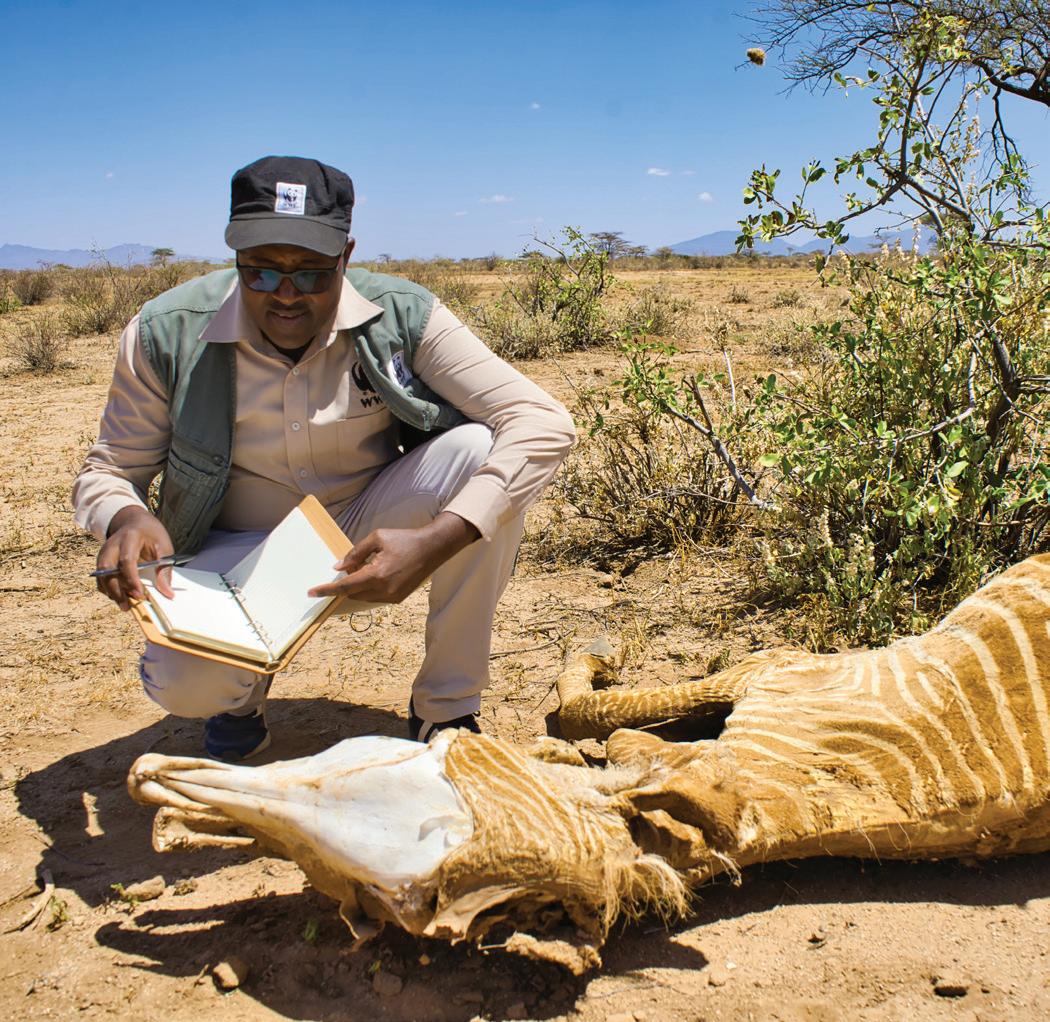
The emergency relief actions provided urgent aid to affected communities and wildlife such as food relief and water trucking.
As of June 2023, 53,203 people had received emergency drought relief in Marsabit, Garissa, Isiolo and Lamu counties through the Save a Generation Emergency Drought Appeal campaign - benefiting over 10,000 households.
The emergency relief actions provided urgent aid to affected communities and wildlife such as food relief and water trucking, thanks to your generous donations.


We undertook mid-term interventions with a focus on building resilience and climate change adaptation for communities and wildlife while also minimizing the impact of the drought.
With your help, we funded the construction of a six-million liters community water pan in Bora’ana Community Wildlife Conservancy, Garissa County. This community water pan serves as a vital climate adaptation measure during the dry season, to collect runoff water when the rains finally arrive. A solar-powered pump ensures water is directed to dedicated troughs 200 meters apart for livestock and wildlife, a wallowing area for wildlife, and a collection point for the community
Your generosity made this possible!
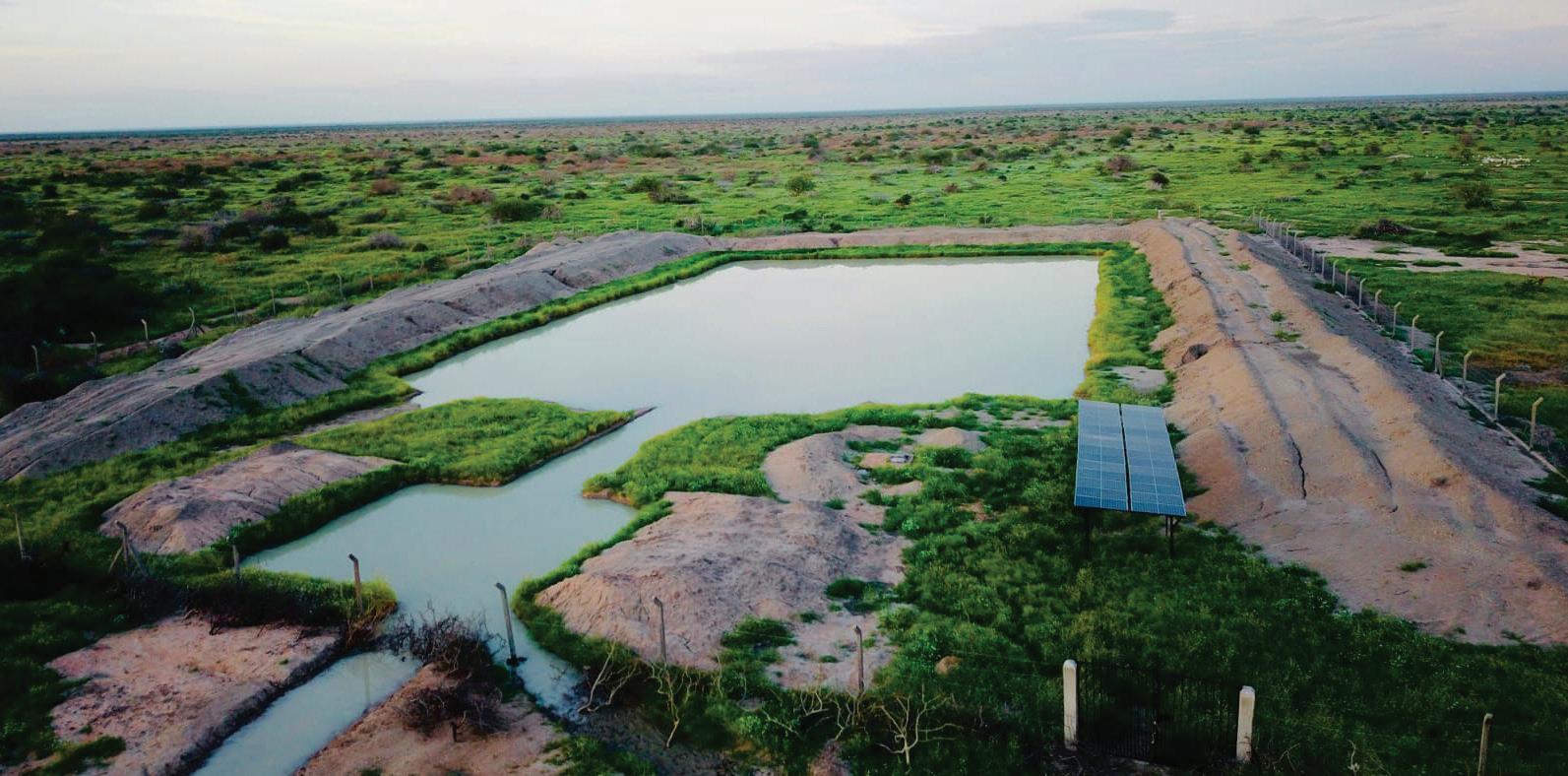
Livestock and wildlife intensely compete for water in Goreale Springs. Some of the livestock are brought from as far as 200km away in the expansive northern Kenya rangelands. To reduce water conflict in this area, WWFKenya constructed a solar-powered borehole to ease strain on the spring. This was done with support from WWF-Sweden, WWFGermany, WWF-Denmark, WWF-UK and WWF-Norway as part of the Save A Generation emergency drought interventions to mitigate against the adverse impacts of climate change-induced drought.
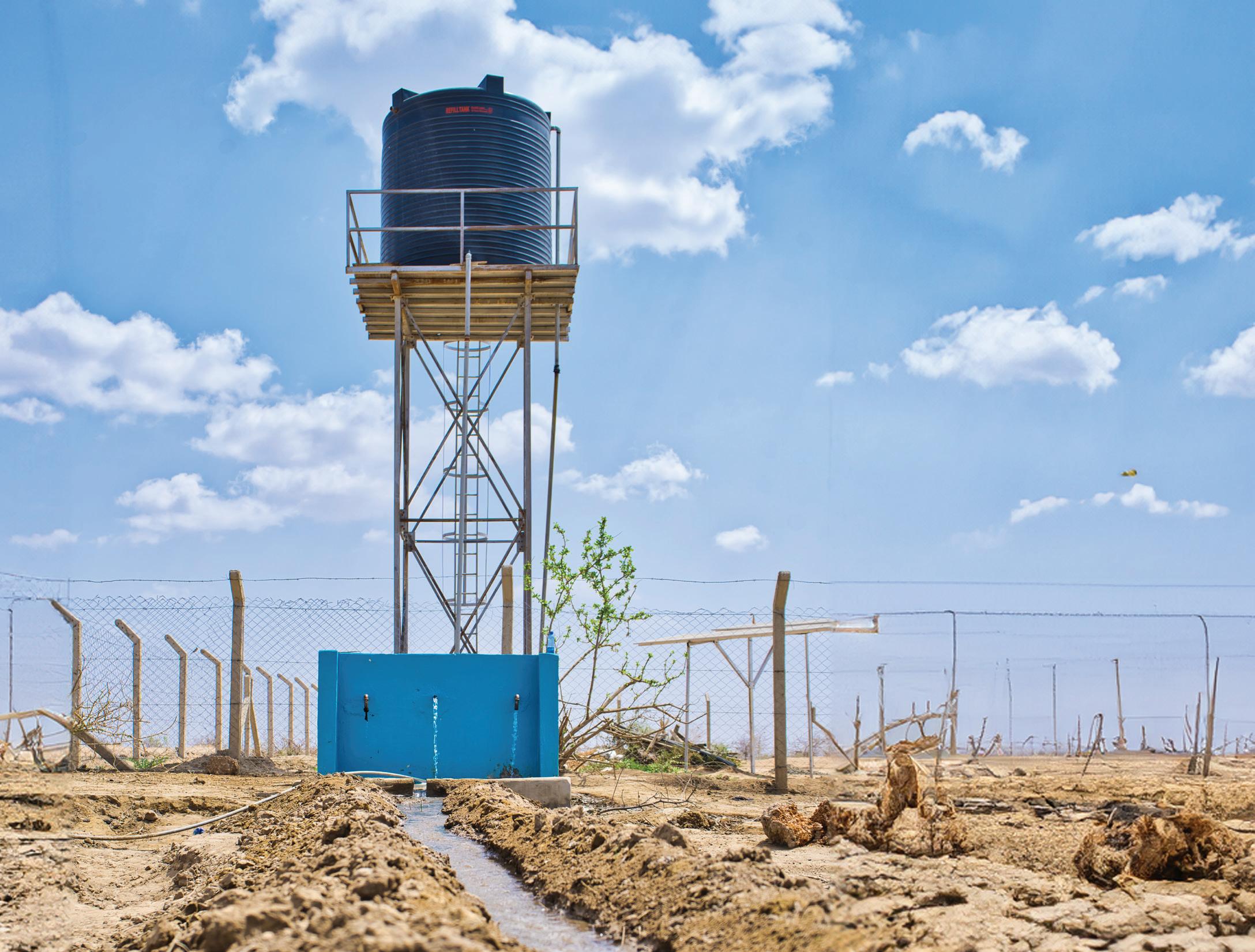



Zero poaching of elephants maintained in priority sites in the Greater Mara ecosystem since 2020.
The population of elephants in Loita Forest Ecosystem was established at 659 elephants in 2023 compared to 432 elephant population recorded 2018.

Zero poaching of rhinos: This was another good year for black rhino population with zero poaching recorded in Financial Year 2023. In addition, the black rhino population also recorded a remarkable 2.9% growth in 2023, with individuals increasing from 938 recorded in 2022 to 966.
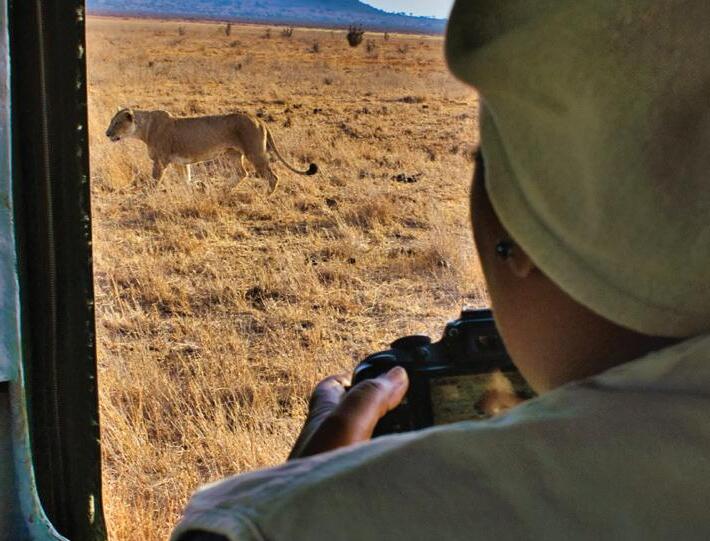
Lion Census: WWF-Kenya supported Kenya Wildlife Service to undertake a lion census in Tsavo sub-landscapes. The results will be released in Financial Year 2024. We supported the Mara Predator Conservation Programme to conduct a lion photographic identification exercise. The results were used to create a database that is used to identify individual lions. Lion censuses are conducted using the Spatially Explicit Capture Recapture Method which relies on photographic identification of unique lion whiskers for individual confirmations.
Lion Corridor Mapping: To enhance carnivore conservation, WWF-Kenya also partnered with the Mara Predator Conservation Programme to collar lions. Information gained from the GPSenabled collars will be used to map the lion corridor in Tsavo sublandscape for more effective lion conservation.
Threats: In May 2023, an unusually large number of lions were killed in Amboseli, including six in one weekend alone. Among those killed was Loonkiito, one of Kenya’s oldest lions at the age of 19. WWFKenya, working in concert with the Kenya Wildlife Service, engaged the community through a series of meetings to de-escalate the crisis. As a measure of reducing the conflict, WWF-Kenya distributed 900 predator deterrent lights for installation in cattle bomas to prevent livestock predation. In addition, WWF-Kenya also provided 12 predator-proof bomas for Amboseli residents, interventions that have proven to secure livestock from carnivore predation.

Kenya Sea Turtle Conservation Protocol: In collaboration with the Kenya Wildlife Service, we supported the launch of the Kenya Sea Turtle Conservation Protocol. The protocol will help streamline best practices in sea turtle conservation initiatives among the various organizations working on sea turtles in coastal Kenya while laying the ground for the standardization of sea turtles nesting data collection for Kenya. Plans are already in place to centralize this data through a network of sea turtle conservation groups under the leadrship of the Kenya Wildlife Service. Such data would be crucial in justifying the protection of sandy beaches through gazettement from coastal development and in allocating appropriate land/sea use practices as we move towards the maritime spatial planning for a sustainable blue economy.

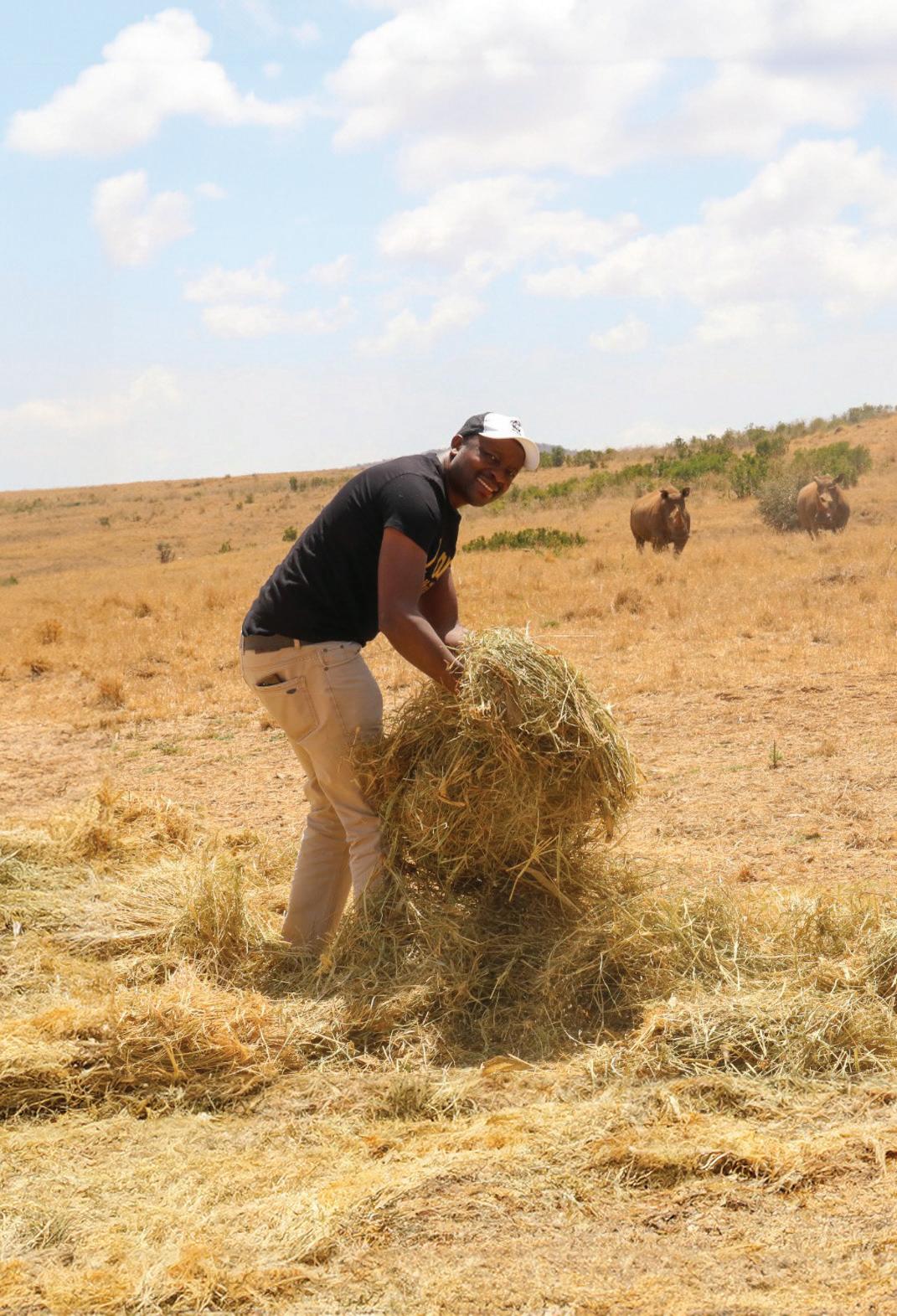


The rains finally came, but after a devastating long drought that affected wildlife across the country.
Besides providing emergency relief for people in critical wildlife migratory corridors, we sprung to action to ensure that endangered species like the critically endangered black rhino were also cushioned through a supplementary feeding programme.
By supporting the #SaveAGeneration emergency drought appeal, you helped us buy hay for rhinos in northern Kenya, one of the regions hit the most by the drought.
“The rhinos maintained or improved their body condition in Lewa Conservancy over the period of the supplementary feeding programme indicating the positive impact. In Sera rhino sanctuary, water provision reduced the distance rhinos used to walk in search of water thus averting dehydration and territorial fights which can be fatal,” Geoffrey Chege, Programme Coordinator Rhino, WWF-Kenya.
Since 2021, Lewa Conservancy, which is home to over 200 black and white rhinos, had not received adequate rainfall thus affecting the availability of forage for these iconic species.
“With the support of WWF-Kenya, we were able to ensure that no black rhino or white rhino died during the persistent drought. We not only supported the rhinos but also provided support to other wildlife like buffalos and elephants,” said Dominic Moringa, Head of Conservation and Wildlife Programmes, Lewa Conservancy.
The harsh drought killed at least 1,000 buffalos at Lewa Conservancy.
Overall, together with our partners, we supplied 3,600 bales of hay and lucerne, with the targeted rhinos maintaining or improving their body condition over the period indicating the positive impact of such an intervention. The drought also affected the distribution and availability of water in Sera rhino sanctuary.
In Sera rhino sanctuary, WWF-Kenya supported the piping of 2.8km of water into a ranger camp and water trough for the rhinos.
Body condition assessments showed that the animals were doing well with a black rhino calf named Zarlia among those that benefited from the supplementary feeding programme.
To support our climate adaptation and resilience initiatives scan QR code


A total of 735.35 hectares put under restoration across all WWF-Kenya landscapes in 2023.

Javelin Morans of the Mara drop spears for a stab on human-wildlife conflict awareness
On a chilly Saturday morning, a group of morans from Maasai Mara Siana Conservancy stepped out for the Earth Hour celebrations,each with a javelin spear in hand. As the rain pounded the metal rooftop of one of the community rangers’ offices, the morans huddled together in the dimly lit room to catch a glimpse of Kenya’s Olympic Javelin hero, Julius Yego, from a laptop held aloft by one of their towering colleagues.
Yego, the 2015 World Athletics Championship winner and 2016 OIympic Games silver medallist was on the screen via a Zoom call and excitement was palpable across the beaming faces of his audience back in the banda. The group consisted of young men, all experienced in throwing spears, a tool their community has used for centuries to safeguard their livestock, homes and their loved ones from attacks.
Human-wildlife conflict is rife here just like in many community conservation areas in Kenya where people and wildlife live side by side. Sadly, the outcome of these conflicts has always ended in huge losses for both the community and wildlife, hence the very reason the morans
were here, ready for their first Javelin sport. The National Recovery and Action Plan for Lion and Spotted Hyena in Kenya 2020-2030 identified human-lion conflict as a major nightmare in lion conservation in the country. The Mara alone registered 427 human-wildlife conflict incidents that resulted in 1,210 livestock deaths and 282 livestock injuries, according to the WWF-Kenya Annual Report FY22,with areas with predator proof bomas and lion lights being the only exceptions.
On Earth Hour, the morans excitedly swapped their spears, with the Javelin ready to cast a spotlight on the area’s long standing humanwildlife conflict. Two days before the Earth Hour, they had been out in the field preparing and perfecting their act for the big day. Now, bolstered by Yego’s encouragement and pledge to support the identification of talent in the communities in the Mara, Amboseli, Tsavo and northern Kenya, the morans were in high spirits as they stepped onto a green patch of an open savannah overlooking the imposing hills of the Mara.
The rain that pounded earlier during the Zoom call having lulled and faded away, a clear blue sky and a warm day showed up in time setting just the perfect mood for a flexing of muscles.
“Today’s event marks the beginning of an important conservation sport, that is Javelin. The sport will provide a platform to educate communities that the spear can be used for sport, rather than killing wildlife,” observed Evans Sitati, the Chief Executive Officer, Mara Siana Conservancy.
But the morans are not just young men. They are exuberant landowners who have given their land for wildlife conservation and are benefiting from having wildlife within the conservancy. Like Yego who honed his javelin skills through YouTube, the youngmen are keen to turn their long held cultural skills into a revenue stream.
Sontanai Nkoile, one of the morans, said the group is upbeat about the potential of tapping the Javelin Throw sport as a revenue stream through competition.
In the past, Nkoile recounted, the Maasai Community used the spear to test their bravery by going out in the wild to shoot lions and as a form of security to guard their homes and livestock.
On that day, the more than 30 morans exchanged the lone orange Javelin, and after several rounds each, three emerged the clear winners marking the birth of a javelin movement in the game.

Yego says the movement needs to be taken across all conservation areas beyond Mara Siana Conservancy to Amboseli, Tsavo and Northern Rangelands.
According to Nkoile, the sport has presented a springboard to the group to change the perception of the whole community that their spears or rather the Javelin, can now be used to win in sports instead of killing wildlife.
“The morans are well-known for handling spears and there is a lot of hidden talent in the area especially when it comes to Javelin as a sport. The introduction of Javelin as a sport will encourage conservation of wildlife,” said Kevin Gichangi, WWF-Kenya’s Senior Coordinator for Greater Mau-Mara Loita Sub landscape.
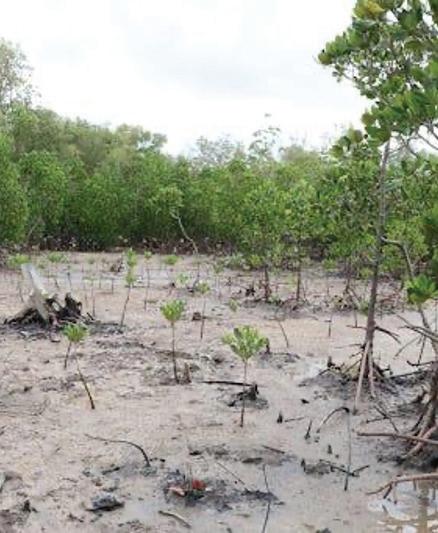
A
thousand hopes as Mwache, one of Kenya’s largest mangrove forests, recovers
If there is one area where mangrove conservation has had a significant impact in coastal Kenya, it is in Mwache in Kwale County.
In Mwache, there is a forest reserve that is approximately 4,000 hectares. The reserve is one of the largest mangrove forests in Kenya. It is home to baboons and numerous bird species.
Mwache Forest Reserve was under threat from human activities, including logging, charcoal production and farming. These activities not only destroyed the mangrove forest but also exposed the area to extensive soil erosion, water pollution and led to a decline in fish populations.
The adjacent Bonje mangroves were also severely affected by the heavy El Nino rains in 1997, 2007 and 2017. In the resulting floods, the Mwache River overflowed, destroying thousands of mangroves.
The situation worsened due to the excessive cutting down of trees for construction and fuelwood. This spread desertification, causing.

But hope was on the way when a coalition of stakeholders joined forces to restore the degraded Mangrove forest. WWF-Kenya, the Kenya Forest Service, Kenya Marine and Research Institute and community conservancies in Bonje and Mwache took action, bringing on board the local community and fishers to cultivate mangrove seedlings.
Saidi Juma, the chairperson of the Bonje Beach Management Unit and the Community Forest Association, said they were moved to action by the dwindling fish populations, deteriorating environmental conditions and disruptions to their livelihoods. The Beach Management Unit and Community Forest Association have a combined membership of 1,200 members.
To date, they have restored about 83 hectares of mangroves, and still have 315,000 mangrove seedlings awaiting planting in designated areas.
Through these conservation efforts, the benefits of the mangrove restoration in Mwache Forest Reserve are becoming evident.
Mangrove forests are important because they provide safe and secure habitat for a variety of marine species. The mangrove roots act as nurseries and breeding grounds for many fish and shellfish species, which are critical for the livelihoods of the local communities who rely on fishing for their income and food security.
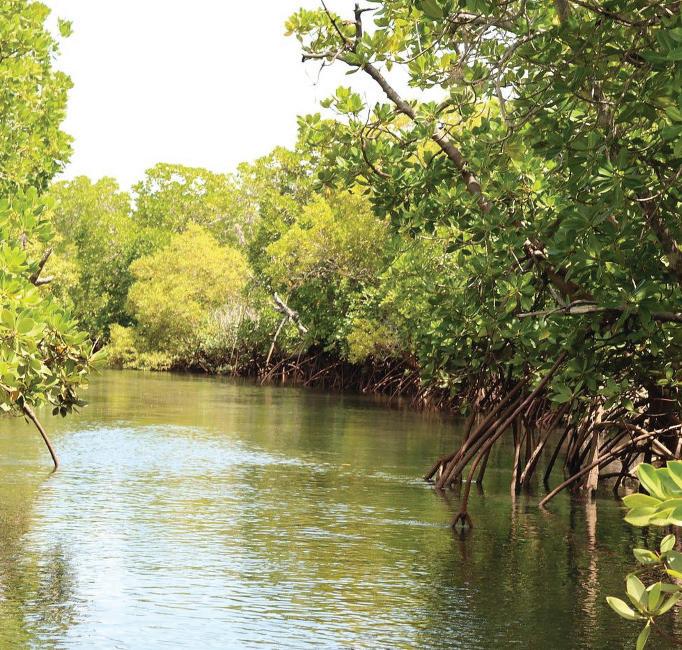
Further, the conservation efforts have contributed to the protection of the shoreline from erosion and storms, reducing the damage caused by high tides and storms. The mangroves act as a natural barrier, reducing the impact of waves and currents.
In addition to the environmental benefits, the conservation of the Mwache mangrove forest has also had a positive impact on the local economy. The restoration of the mangroves has provided employment opportunities for the local community through the establishment of eco-tourism activities such as boat rides and nature walks. The income generated from these activities has helped to reduce poverty levels, increase household incomes and improve the quality of life for the local residents.
Dr Mohammed Pakia, WWF-Kenya’s Terrestrial Coordinator, said the communities in Kwale County have received support through the International Climate Initiative to restore over 30,000 acres of forests.
“The usual approach involves training community rangers who work alongside the Kenya Forest Service to protect the forests and educate residents on sustainable farming practices, thereby building their capacity. Forest-adjacent communities are provided with business and farming skills to avoid over-reliance on natural resources. Some communities received training in butterfly farming and beekeeping, among other ventures,” said Dr Pakia.
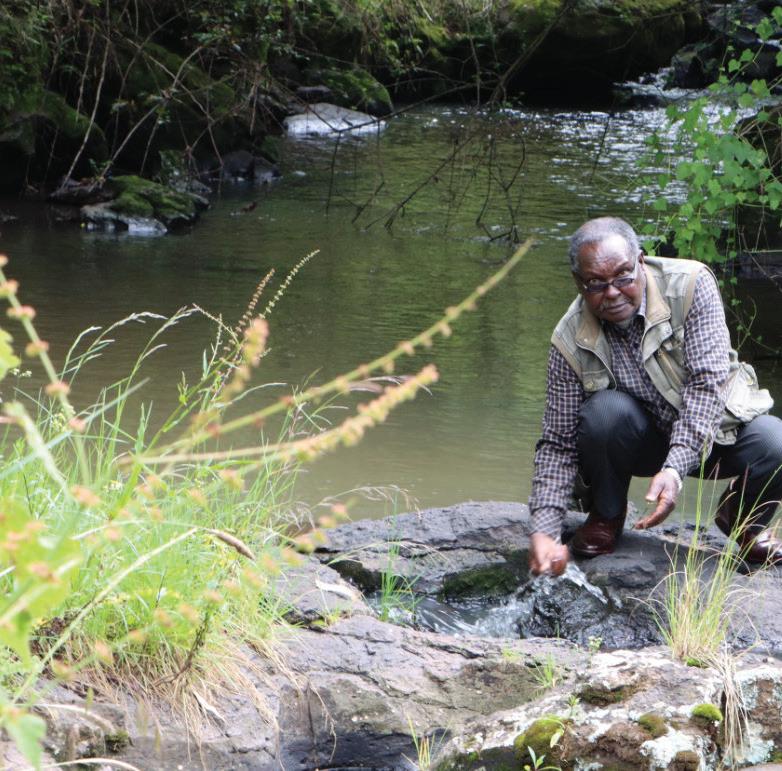
“The degradation of the forest and vegetation in our catchment area had a severe impact on Mkungi-Kitiri River on which thousands of locals in this community depend. The river is also one of the most critical tributaries of Malewa River which drains into Lake Naivasha.
Before we initiated the rehabilitation of the Mkungi-Kitiri River in 2008, it would occasionally dry up or become very turbid during rainy seasons due to siltation. This forced residents to trek long distances in search of domestic water. We began by establishing indigenous tree nurseries and encouraging our members to plant trees and grass along the riverbanks to curb surface runoffs into the river. Our efforts gained momentum, and in 2017, WWF-Kenya introduced the Lake Naivasha Basin Reforestation Project (LNBRP) which not only trained our members in environmental conservation but also provided us with tree seedlings.
We are proud to say that the project has supported more than 400 smallholder farmers in establishing woodlots and on-farm forests. Personally, I have a five-acre woodlot on my farm, which to me is like having money growing on my farm.
Because many locals have trees on their farms, they no longer have to invade government forests for timber or firewood, therefore, conflict between the locals and forest guards have significantly declined.
Through the establishment of nurseries, promoting tree growing, and fostering a sense of ownership, we’ve managed to transform the landscape for the better. We hope our efforts will continue to inspire others to contribute to environmental conservation and sustainable practices.
We also rehabilitated 35km of Mkungi-Kitiri’s riparian and its tributaries. Our aim is to rehabilitate an additional 55km over the next three years. And the results of our work have been remarkable. The river is no longer intermittent. It flows throughout the year with clean water. The positive impact also extends to the reduction of conflicts between the local community and the forest guards.” Joseph Mwaniki Njuguna, Chairperson, Mkungi-Kitiri Water Resource Users Association (WRUA)
The Lake Naivasha Basin Reforestation Project is a seven-year project that aims to establish 1,150 hectares of new forest area which is expected to generate a minimum of 73,000 Gold Standard Verified Certificates before the end of 2024. The project is funded by COOP Switzerland.

“Threats to rivers are direct threats to functioning habitats and our lives because unhealthy rivers manifest in malfunctioning ecosystems. We must all raise our voices for rivers because protecting them is not just about preserving the ecosystems closest to us - it is about safeguarding the interconnected web of life that these freshwater bodies support from their source to mouth”
Dr William Ojwang, Freshwater Lead, WWF-Kenya.

Counties commit to save the ‘drying’ tributaries of Ewaso Nyiro River to avert water conflicts
Journey of Water Campaign in Ewaso Nyiro Basin attracted about 600 participants over the course of three days, and 5 million more who were reached through mainstream and social media.
The three day campaign was carried out under the theme Mito Safi ,Jukumu Letu.
Following the grueling 20km walk along the Timau, Nanyuki and Isiolo river, which are the major tributaries of the 700km Ewaso Nyiro River, three County Governments committed to take action to save the drying tributaries of the mighty river.
Along the tributaries, the participants noted the extensive over-abstraction and illegal water connections for agricultural use as well as the widespread poor irrigation methods that contribute to wastage of water and pollution as a result of agrichemicals used in farms dotting the basin.
“We are going to pick a river, most likely Nanyuki River, and focus our resources and conserve our water sources. We will have another stakeholders’ forum.” Ms Leah Njeri – Water, Environment and Natural Resources, Laikipia County Executive Committee Member.
“Water is life and demand is increasing day by day. We are embarking on drilling boreholes to tap groundwater and sink 10 boreholes every financial year starting in Financial Year 2024.” Godana Dida – Chief Officer, Water and Sanitation, Isiolo County.
“We will undertake riparian conservation and catchment rehabilitation for three rivers, namely: Chania, Naromoru and Nairobi. We’ll also be incorporating the Water Resources Users Association into our budget because we reviewed the County Water Act,” said Jeniffer Mugi, Chief Officer, Water Irrigation and Climate Change, Nyeri County.
The Journey of Water campaign is an annual WWF-Kenya initiative that is mainly funded by Netherlands Embassy in Kenya through the Catchment to Tap project.



Info about Ewaso Nyiro River Ewaso Nyiro River flows down from Mount Kenya to the dry plains that stretch East of the Great Rift Valley. It flows about 700 km before emptying out into a large network of wetlands known as the Lorian swamp.
The Ewaso Nyiro River supports economic development and livelihoods that reside along its banks. With a continuous water supply from the glaciers from Mount Kenya, it runs down through 7 semi-arid counties: Meru, Laikipia, Samburu, Isiolo, Wajir, Garissa and Marsabit, serving as an important catchment for people and biodiversity. The catchment became a main resource for both large and small-scale farmers and their livelihoods.
It also provides water to the species of the Samburu National Reserve, Shaba National Reserve and Buffalo Springs National Reserve supporting species such as elephants, giraffes, hippos and cheetahs.
But water quantity has decreased due to longer drought periods induced by climate change and unsustainable farming practices and degradation of forests which are key ‘water towers. WWFKenya has been working with diverse freshwater conservation stakeholders to call for collective action for water through the annual Journey of Water campaign.


Through the Coca-Cola Foundation’s Waste to Value project (TCCF-Waste to Value), we strengthened the capacity of three communitybased organizations (CBOs) in coastal Kenya –Kisauni Combine Waste Collector, Big Ship and Likoni Community for Development.
As a result, 600 beneficiaries have increased their incomes with 100 of them employed at plastic recycling centres. This improved plastic waste management and beneficiaries’ economic well-being. Buy-back centres have encouraged waste managers in Mombasa’s six sub-counties to collect, sort, and sell plastics, resulting in 100 tonnes of waste by May 2023. Constant plastic collection and separation raised household awareness, promoting waste segregation and reducing plastic pollution.

We reviewed the Environmental Impact Assessment for Devki Steel Wind Power Project, a mega infrastructure initiative, to ensure that its implementation adheres to sustainability principles that meet WWF and international best practices. Additionally, WWF-Kenya and partners supported 5 investments to reduce their footprint in enterprise development.

1,048 households/communities/institutions adopted renewable energy solutions as a result of WWF-Kenya and our partners’ support.
50 households in Kilifi and Malindi towns adopted use of biomass briquette as a measure of utilization of energy efficient solutions.
Chelal Tea Factory installed a solar parabolic trough system hence reducing their energy consumption from bioenergy to solar power.
20 biogas units were installed for households in Kaptagat. This adoption of clean energy in Kaptagat benefitted at least 100 people, enabling them to meet their domestic energy hence reducing forest degradation.
Through the DMDP project, WWF-Kenya developed a Responsible Business Conduct in line with the International Labour Organization standards. Waste collectors were socialized on the new guideline.
Six business enterprises were enrolled in a 12-month innovation challenge to benefit from business development skills.

“When the first Kenya Black Rhino Management Plan was drafted in 1983, surpassing the 1,000
“We used to go to the forest to fetch firewood. We would make frequent trips and sometimes we would get arrested. Now I thank God he has brought me this far. In the forest, it was not easy to find firewood. There was very little firewood. If you went in the morning, it would take up until midday to collect enough firewood. When this project started, we held a meeting in Kaptagat. WWF-Kenya informed us about the initiative to transition households to clean energy. We used the balloting method to select the 20 beneficiaries. After the biogas installation, they trained us on how to mix the cow dung with water to make the slurry. Thereafter, they did the wiring and brought the burners. Before getting the biogas, life was a bit difficult. It was a hard chore to even light the firewood for cooking. Now it takes no time to cook. Even when I get guests, they have tea within no time. Now we do not go to the forest firewood.”
Lilian Kimeli – Kaptagat resident.
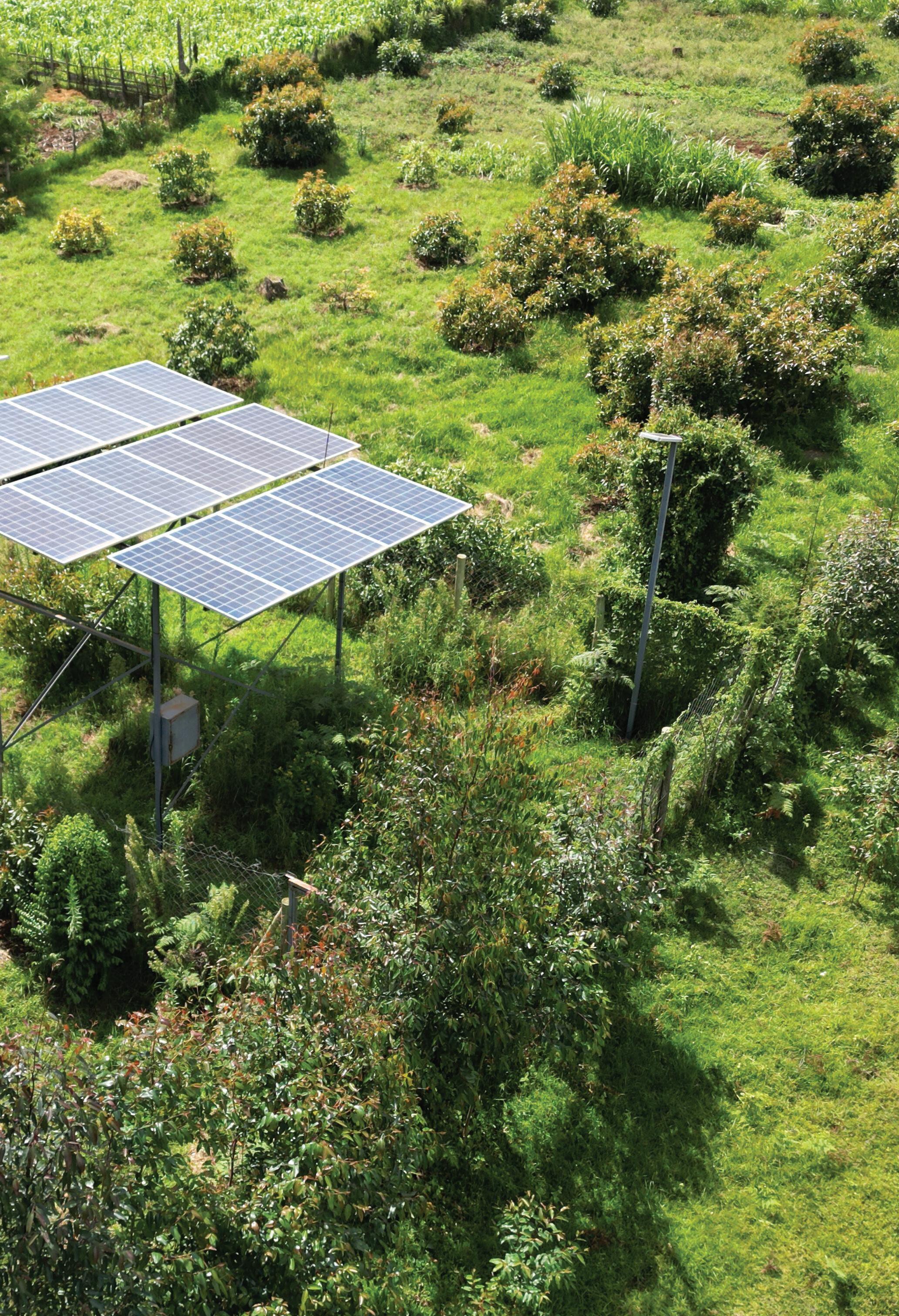
The Greening Kaptagat project tackled climate change by addressing carbon emissions from deforestation, forest degradation and unsustainable practices.
Lilian is one of 20 residents from Kaptagat, Elgeyo-Marakwet County who benefited from the clean energy transition initiative of the project through installation of biogas units.
The beneficiaries said biogas has weaned them off of fuelwood which they fetched from the Kaptagat Forest. If well maintained, the biogas units can meet the households energy needs for at least 25 years.
“This is the time to transition from dirty energy to clean energy,” said Dr. Chris Kiptoo, the outgoing Principal Secretary at the Ministry of Environment and Forestry.
The project was funded by the United Kingdom’s Partnering for Accelerated Climate Transitions, a programme of the UK Government.


53,203 number of people who received emergency drought relief in Marsabit, Garissa, Isiolo, and Lamu Counties through WWF-Kenya’s National Drought Emergency Response initiative.

476 number of people who have benefited through increased access to financial support through the Village Savings and Loans Associations (VSLAs) initiative that is supported by the KECOFISH project in coastal Kenya.
24 VSLAs from Shimoni Vanga have savings of 24 Million Kenya Shillings, with the groups having highest savings of 1,000,000 Kenya Shillings and those with the lowest having 200,000 Kenyan Shillings.

390.7 Million Kenya Shillings: Income generated by the beneficiaries of WWFKenya’s interventions.

176 Micro, Small and Medium Enterprises had improved financial access through acquisition of loans amounting to 4.88 Million Kenya Shillings through the Green Horticulture at Lake Naivasha Basin project. Funds recipients used the funds to improve sustainable agriculture production, mainly for buying farming inputs and recorded bumper harvests as a result of incorporating climate-smart agriculture.


64,416: Overall number of people who benefited from WWF-Kenya and our partners conservation initiatives. This is a marked increase from the 12,701 people who benefited from out interventions in 2022.

2,264 green/blue jobs created through WWF-Kenya supported investments and interventions throughout the year. As at the close of FY 23, the number of green/blue jobs created through WWF-Kenya interventions stood at 3,314.


Narok County launches spatial plan
Narok County became the seventh devolved unit in Kenya to launch a Spatial Plan after Governor Patrick Ntutu unveiled the Narok County Physical and Land Use Development Plan 2023-2032 at a ceremony in the Maasai Mara National Reserve.
Governor Ntutu also launched The Greater Maasai Mara Ecosystem Management Plan 2023-2032 and the Maasai Mara Reserve Management Plan 2023-2032 at the ceremony that was graced by two Cabinet Secretaries, Hon. Peninah Malonza of the Ministry of Tourism, Wildlife and Heritage and Hon. Soipan Tuya of the Ministry of Environment, Climate Change and Forestry.
Narok is the fifth county to have developed a Spatial Plan with technical and financial support from WWF-Kenya after Lamu, Kwale, Bomet and Kilifi Counties.
The spatial plans have zoned out areas of Critical Ecological Significance (CESAs) as well as established areas where economic and social activities should occur. These works have brought out land use cover trends, land tenure trends as well as human, livestock and wildlife population trends over the last 30 years. Coupled with climate change analysis, these trends reveal where degradation is highest and propose interventions to address those issues.
Model County Sustainable Waste Management Bill
WWF-Kenya supported the Ministry of Environment, Climate Change and Forestry develop a model County Sustainable Waste Management Bill infusing critical elements of waste recovery and recycling as well as intergration of extended producer responsibility (EPR) at the county level. This bill is already being considered for adoption by the Council of Governors. It will, therefore, mainstream a harmonized adoption of the Sustainable Waste Management Act, 2022 and the proposed EPR regulations of 2023.


© WWF-Kenya
We bear witness to the accelerating decline of nature and our climate, with serious consequences for life on Earth, including our own.
Our vision is to build a future in which people live in harmony with nature. To deliver this mission, we work to conserve and restore biodiversity, the web that supports all life on Earth; to reduce humanity’s environmental footprint; and to ensure the sustainable use of natural resources to support current and future generations.
We celebrate and respect diversity in nature and among the people, partners, and communities with whom we work. Across the many cultures and individuals that represent WWF, we are unified by one mission, one brand, and one common set of values:
• Courage
• Integrity
• Respect
• Collaboration
Courage: We demonstrate courage through our actions, we work for change where it’s needed, and we inspire people and institutions to tackle the greatest threats to nature and the future of the planet, which is our home.
Integrity: We live the principles we call on others to meet. We act with integrity, accountability and transparency, and we rely on facts and science to guide us and to ensure we learn and evolve.
Respect: We honor the voices and knowledge of the people and communities that we serve, and we work to secure their rights to a sustainable future.
Collaboration: We deliver impact at the scale of the challenges we face through the power of collective action and innovation.


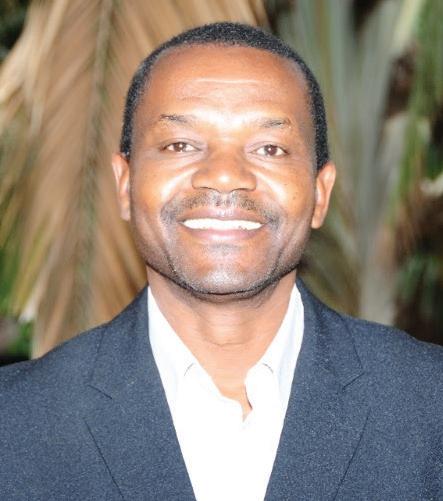


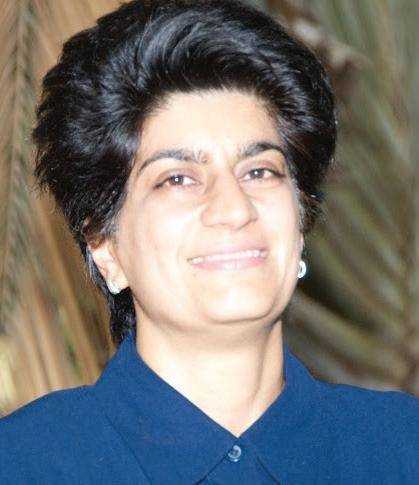







Our FY23 restricted income spending increased by 20% compared to FY22 due to increased funding

The proportion of administrative expenditures to that of program expenses reduced to 6% from 7% in previous year.
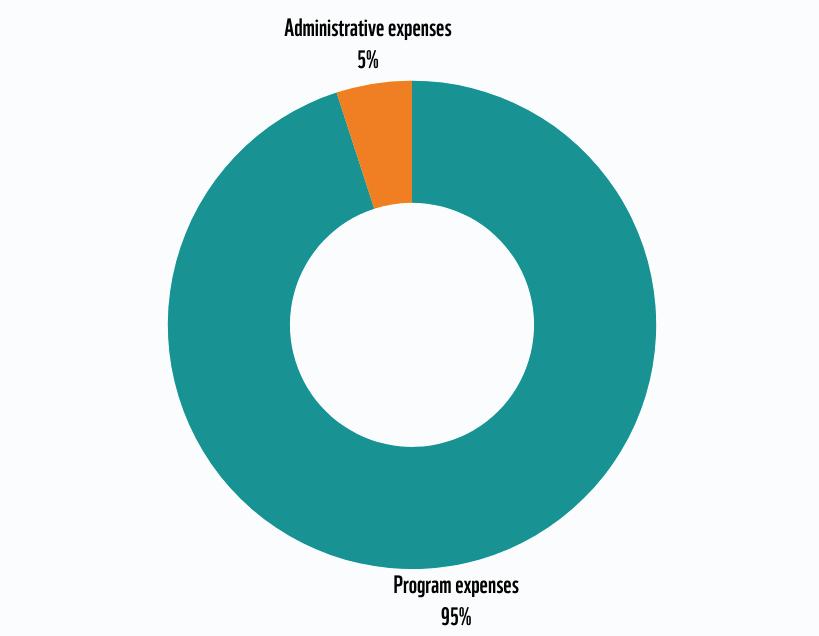
WWF-Kenya recognizes that conservation and human rights are at the heart of achieving sustainable development. We have adopted the ESS WWF Network Standards and are committed to implementing them to secure these rights through pursuing our values of courage, integrity, respect, and collaboration to achieve our conservation objectives. This will enhance the social wellbeing of society, including that of the marginalized, vulnerable, and Indigenous People and Local Communities.
We want to do what is right
At WWF-Kenya people are at the heart of what we do. Upholding respect for, and ensuring the safety and rights of employees, partners and the communities we work in, is core to our organisation. Any breach of that should be reported without fear of reprisal and every person we work with should feel empowered to safely do so.
Please select one of the options below and proceed through the following questions to take the next step in submitting your report. After having sent your message you will receive an ID and a password on the screen. Save these in a secure manner. You can choose to remain anonymous throughout this dialogue. We aim to acknowledge receipt of your message within 24 hours and will provide an update within 10 calendar days.
1. Internal WWF issues - Including but not limited to fraud, corruption, discrimination, data breaches, workplace conduct and health & safety concerns
2. Community issues - Including but not limited to grievances surrounding WWF projects. Find information about WWF’s Environmental & Social Safeguards Framework at wwfkenya.org
3. Human Rights issues - Any serious allegations of abuses committed by WWF employees or partners
Any grievances or complaints? Please email - compliance@wwfkenya.org
